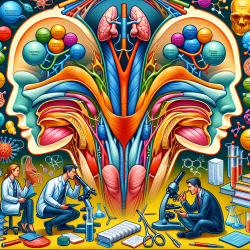Introduction
Cricopharyngeus Muscle Dysfunction (CPMD) is a prevalent yet poorly understood disorder that significantly impacts swallowing safety and efficiency. According to recent research, around 25% of individuals with dysphagia may experience some degree of CPMD. Despite its prevalence, CPMD lacks clear diagnostic criteria, making it a challenging condition for practitioners to address effectively.
Understanding CPMD
The cricopharyngeus muscle is part of the upper esophageal sphincter (UES), a high-pressure zone that prevents backflow of swallowed material. Dysfunction in this muscle can lead to symptoms such as globus sensation and swallowing difficulties. CPMD is often underdiagnosed due to its complex presentation and the need for specialized instrumentation like videofluoroscopy and manometry for accurate diagnosis.
Diagnosis and Multidisciplinary Approach
Diagnosing CPMD requires a collaborative approach involving laryngologists, speech-language pathologists, and gastroenterologists. Videofluoroscopy is commonly used to confirm CPMD, although emerging tools like high-resolution pharyngeal manometry (HRPM) show promise in enhancing diagnostic accuracy.
Treatment Strategies
Treatment for CPMD is diverse, ranging from therapeutic management by speech-language pathologists to surgical interventions by otolaryngologists. Common therapeutic exercises include the Shaker head lift and the Mendelsohn maneuver, which aim to improve hyolaryngeal excursion and UES opening. Surgical options such as dilation, botox injections, and cricopharyngeus myotomy have shown varying success rates.
Research and Future Directions
Despite advancements, significant gaps remain in understanding CPMD's pathophysiology and optimal treatment approaches. Well-designed clinical trials are essential to develop standardized diagnostic criteria and evaluate the long-term effects of surgical interventions. Further research is needed to assess CPMD's impact on swallowing safety, efficiency, and patient quality of life.
Conclusion
CPMD presents a significant challenge in clinical practice due to its complex nature and lack of standardized treatment protocols. Practitioners are encouraged to engage in ongoing research and collaboration to enhance their understanding and management of this disorder. By doing so, they can improve outcomes for patients experiencing CPMD.
To read the original research paper, please follow this link: Cricopharyngeus muscle dysfunction: a poorly defined disorder from diagnosis to treatment.










